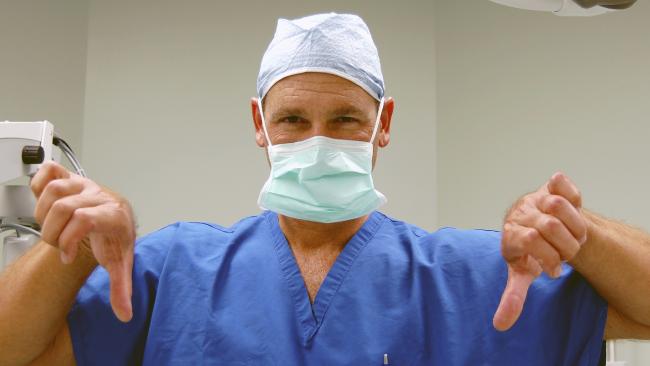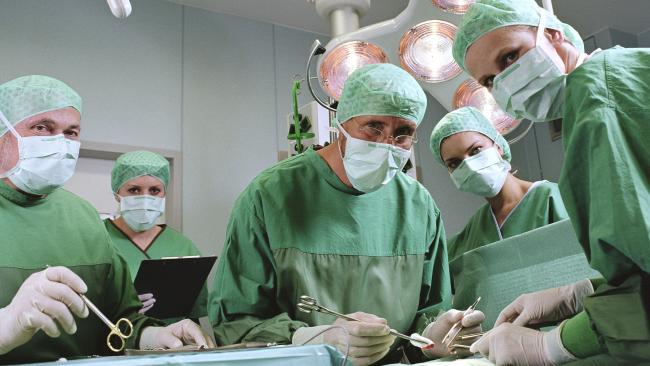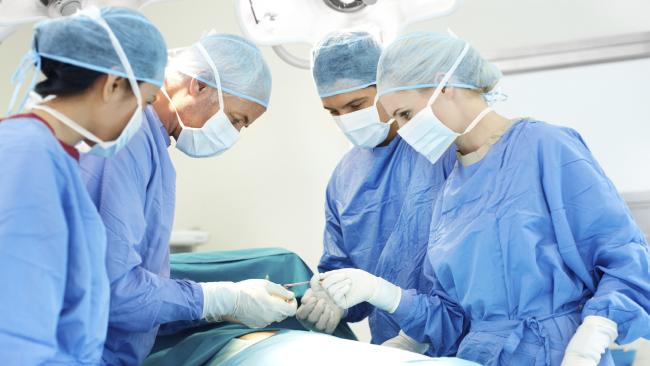
IT’S the pricing scam that means you’re paying $100 a year more for your health insurance and a group of community health funds wants reforms to fix it.
When you have surgery in a private hospital your insurer is paying up to 70 per cent more for prostheses like hip and knee replacements than public hospitals pay.
The scam is adding at least $530 million a year to the cost of health insurance, saysHirmaa, which represents eighteen private health insurers which are member-owned and not-for-profit.
Health Minster Sussan Ley yesterday pledged to look into the issue.
“Affordable access to private health insurance — including appropriate pricing of the prosthesis list — is a priority of mine and I will continue to look into the issue closely,” Ms Ley said.
“The market for prostheses in this country is broken and government regulations for pricing prostheses are in desperate need of reform,” said Hirmaa CEO Matthew Koce.
Prostheses include everything from stents for cardiac patients, screws and plates for fixing broken bones, artificial hips and knees right through to insulin pumps for diabetics and eye lenses for cataract patients.

More than 14.3% of your premiums go toward these devices: that’s $1.9 billion in 2014-15.
Public hospitals can get these devices cheaper because they go to tender; in the private system this does not happen.
Instead, the health minister sets the prices health funds must pay for prostheses.
When a new product comes on the market, it is subject to an efficiency test and the manufacturer tells the government what price it wants.
The product is put on the Prostheses List and health funds have to pay the price set by that list.
If a new manufacturer makes a cheaper version of the device, there is no incentive for them to offer a lower price than the price set by the government for the first version of the device because they can make a big profit by charging the set price.
Instead, what they do is use some of their profit to offer sweeteners to hospitals to entice them to buy their product.

This usually comes in the form of volume discounts. If a hospital buys 200 of a company’s hip replacement, they get a $100 per device volume discount.
The hospital gets to keep this $20,000 volume discount, it’s not passed on to health funds or consumers.
Australian Private Hospitals Association chief Michael Roff said he could not comment on the validity of Hirmaa’s conclusions on the basis of seeing only one table that chooses a select range of procedures and lists ‘average’ costs from one State.
“Some jurisdictions tender on a state-wide basis, and may purposely limit the range of devices they purchase which reduces the options available in public hospitals in that State,” he said.
“As for allegations of so-called “sweeteners” being provided to private hospitals, we have not been shown any evidence this is taking place, so we could not comment,” he said.
Karen Carey has had seven medical devices inserted during four open heart surgeries and two operations to insert pacemakers.

And she knows there is a loophole in the legislation that allows hospitals to make a profit on devices because she was the consumer representative on a government committee that was consulted on the existing rules.
She says consumers would never know if private hospitals were making a profit on the devices inserted into them.
“The thing is no patient would know,” she says.
“We need that loophole closed and we need transparency around how much hospitals pay for these devices,” she says.
“I argued strongly at the time to close the loophole but they said hospitals would never do this,” she said.

The West Australian Government publishes the prices its public hospitals pay for medical devices and Hirmaa has cross referenced this with the prices on the government’s Prostheses List.
The analysis found the top 10 purchased devices in the private sector, are estimated to cost on average, 44 per cent more in the private sector.
If public system prices were to apply in private hospitals, it is estimated that over $530 million of wastage would be saved annually.
Hirmaa estimates that by 2018-19, approximately $1 billion could be saved if public sector prices were applied in the private sector.
The Medical Technology Industry Association of Australia, which represents medical device manufacturers says its not aware of pricing in the public sector and “for competition law reasons MTAA does not seek out such information”.
However, it says it does not support overpricing of medical technology and wants the health department to review the benefit review process.
It says in the last decade the average annual growth in the average benefit paid per prosthesis increased by 1.7 per cent per annum, compared with 2.7 per cent per annum for the inflation.
Consumers Health Forum chief Leanne Wells wants greater transparency on pricing.
“It seems that hospitals are able to access prostheses at prices lower than those private health insurers are required by law to pay, but this price discount is not being passed on to the consumer.
“This is another illustration of how current health insurance arrangements do not serve consumers well. It is an area of regulatory reform that needs to be addressed and could lead to benefits for consumers,” she said.